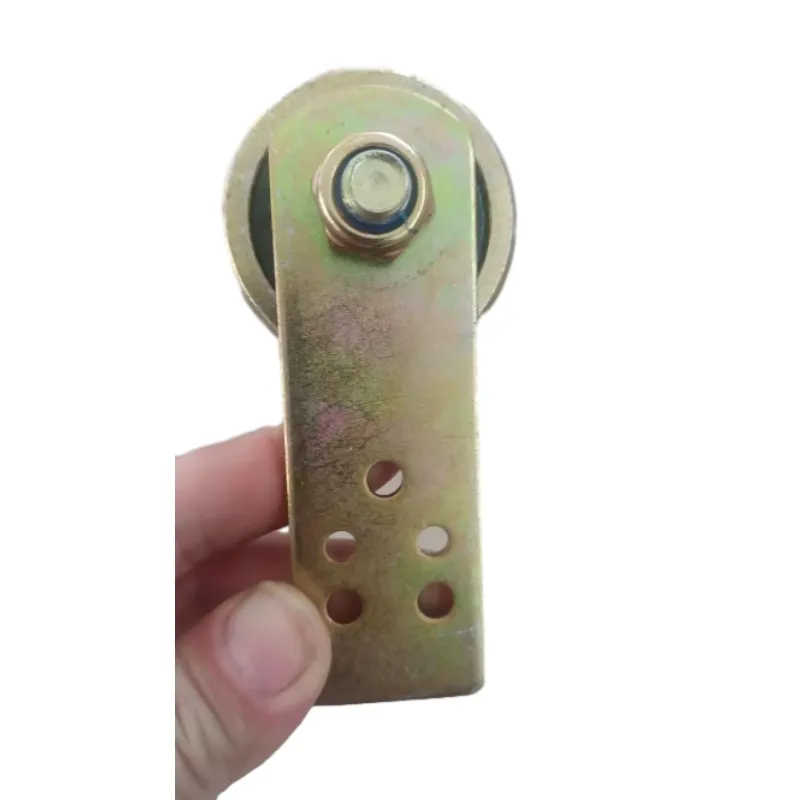
Dec . 04, 2024 15:57 Back to list
Understanding Tapered Bearing Specifications and Selection Guide
Understanding Tapered Bearings A Comprehensive Overview
Tapered bearings are a crucial component in various mechanical systems, renowned for their ability to support both radial and axial loads. They employ a unique design that utilizes tapered rollers, which are positioned between an inner and outer race. This design allows for efficient load distribution and enhanced performance in diverse applications, from automotive engines to industrial machinery.
The Unique Design of Tapered Bearings
The distinguishing feature of tapered bearings is their conical shape. Unlike standard ball bearings, which have spherical rollers, tapered bearings utilize tapered rollers that make contact at a single line. This design enables them to handle higher loads and provides superior stability. The taper angle is a critical factor in their performance, affecting both the load capacity and the operational characteristics of the bearing.
Typically, tapered bearings are available in different sizes, which are defined by their bore diameter, outer diameter, and width. When selecting a tapered bearing, it is essential to consider these dimensions alongside the specific requirements of the application, such as expected loads, speed, and environmental conditions.
Load Capacity and Taper Percent
The load capacity of a tapered bearing is directly influenced by the taper percentage and the geometry of the rollers. Most tapered bearings are categorized by their taper ratio, often expressed in fractions or percentages. The taper percent indicates how much the diameter of the rollers decreases over a specific length. For example, a bearing with a 112 taper will have a reduction of one unit of diameter for every 12 units of length. A higher taper percentage generally means increased load capacity, as it allows for better distribution of stress across the roller surface.
Engineers and technicians often refer to a tapered bearing chart when selecting the appropriate bearing for their needs. These charts provide crucial specifications such as load ratings, maximum speed, and whether the bearing is suitable for particular applications. Understanding this data is vital for maintaining equipment efficiency and longevity.
taper bearing chart

Applications of Tapered Bearings
Tapered bearings are widely used across various industries due to their versatility and performance characteristics. In automotive applications, they can be found in wheel hubs, transmissions, and differentials, where they provide essential support and help reduce friction. Their ability to handle axial and radial loads makes them a preferred choice for heavy-duty vehicles, where performance under stress is paramount.
In industrial settings, tapered bearings are utilized in conveyor systems, gearboxes, and other machinery that experience high load conditions. They are particularly beneficial in applications that require precise alignment and reliable performance under varying operational circumstances. By minimizing wear and tear, tapered bearings contribute to reduced maintenance costs and extended machinery life.
Maintenance and Best Practices
Proper maintenance of tapered bearings is essential to ensure their longevity and efficiency. Regular inspections should be conducted to check for signs of wear, misalignment, or contamination. Greasing at appropriate intervals is critical, as it helps reduce friction and prevents overheating. The choice of lubricant is also vital; a suitable grease should be selected based on the operating conditions, speed, and ambient temperature.
Moreover, aligning the bearing correctly during installation is key to ensuring optimal performance. Misalignment can lead to uneven wear and premature failure, negating the advantages of using tapered bearing technology.
Conclusion
Tapered bearings are an engineering marvel that plays a vital role in the functionality of many mechanical systems. Their unique design and load-handling capabilities make them indispensable in various industries. By understanding the nuances of taper percent and consulting detailed bearing charts, engineers can make informed decisions to optimize performance and reliability. As technology continues to advance, the applications and innovations surrounding tapered bearings will likely expand even further, solidifying their position as a fundamental component in modern machinery.
Latest news
-
Durable Greenhouse Pillow Block Bearings for Reliable Ventilation
NewsAug.31,2025
-
Spherical Roller Bearings Applications: Heavy Duty, Self-Aligning
NewsAug.30,2025
-
Premium Deep Groove Ball Bearings | High Speed & Reliability
NewsAug.29,2025
-
Durable Scaffolding Clamps - Secure & Reliable Tube Connectors
NewsAug.28,2025
-
Common Failures in Thrust Ball Bearings and Solutions
NewsAug.22,2025
-
How Tapered Roller Bearings Can Take Shock Loads
NewsAug.22,2025
